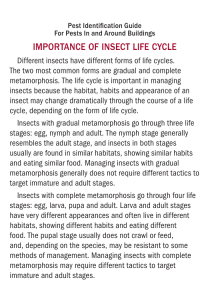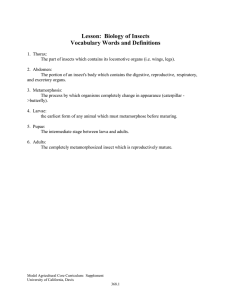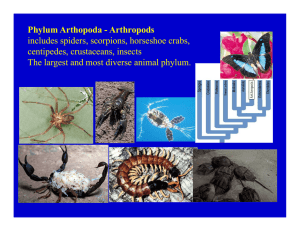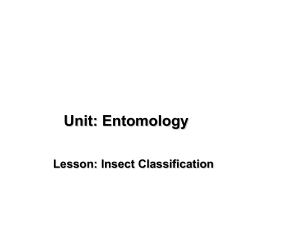Master Gardener Handbook Quiz on Chapter 7: Introduction to Entomology Questions
advertisement
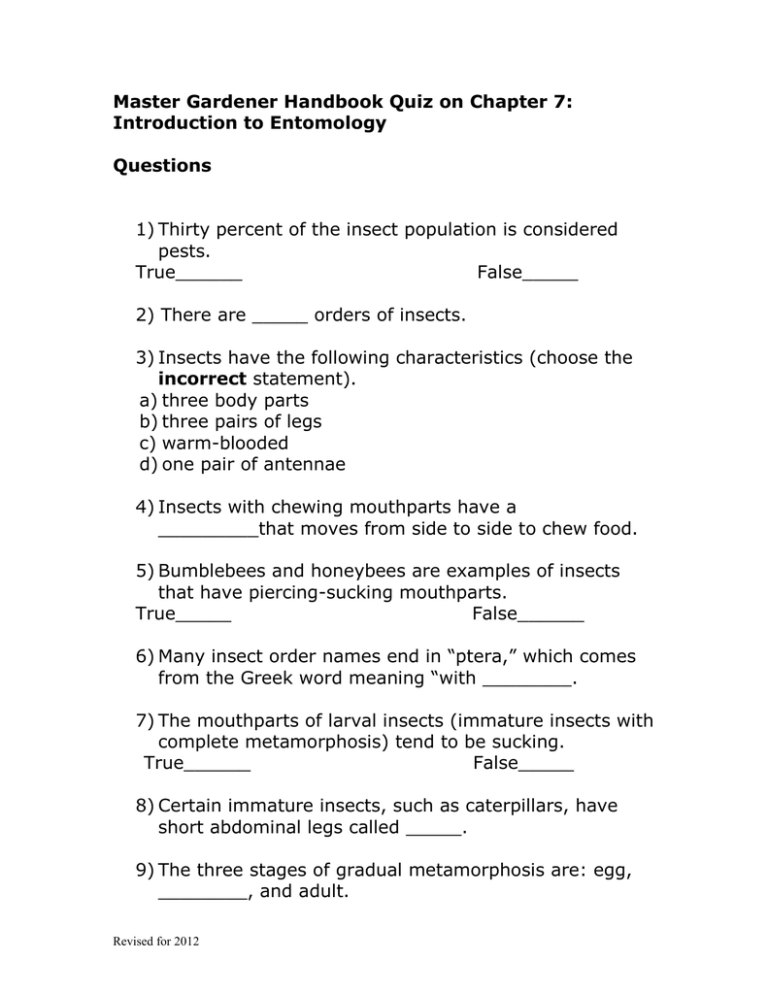
Master Gardener Handbook Quiz on Chapter 7: Introduction to Entomology Questions 1) Thirty percent of the insect population is considered pests. True______ False_____ 2) There are _____ orders of insects. 3) Insects have the following characteristics (choose the incorrect statement). a) three body parts b) three pairs of legs c) warm-blooded d) one pair of antennae 4) Insects with chewing mouthparts have a _________that moves from side to side to chew food. 5) Bumblebees and honeybees are examples of insects that have piercing-sucking mouthparts. True_____ False______ 6) Many insect order names end in “ptera,” which comes from the Greek word meaning “with ________. 7) The mouthparts of larval insects (immature insects with complete metamorphosis) tend to be sucking. True______ False_____ 8) Certain immature insects, such as caterpillars, have short abdominal legs called _____. 9) The three stages of gradual metamorphosis are: egg, ________, and adult. Revised for 2012 10) Which of these insects does not undergo a complete metamorphosis? a) butterflies b) dragonflies c) sawflies d) flies 11) Grasshoppers, crickets and other insects in Order Orthoptera share the following characteristics (choose the incorrect answer): a) 4 inches long b) chewing mouthparts c) elongated bodies d) two pairs of wings 12) Aphids, adelgids, scale insects, and mealybugs are all plant feeders. True______ False____ 13) a) 10 b) 20 c) 30 d) 40 What percent of all insect species are beetles? 14) Ants and bees are part of Order ________, the most advanced order and most beneficial to humans. 15) Not all spiders are predators. True______ False_____ (Answers on next page) Revised for 2012 Master Gardener Handbook Quiz on Chapter 7 Answers Page in Handbook 1) False (less than 10 percent) 99 2) 27 99 3) c. cold-blooded 99 4) mandible 100 5) False (chewing-lapping) 101 6) wings 102 7) False (chewing) 102 8) prolegs 102 9) nymph 103 10) b. dragonflies 103 11) a. six inches 104 12) True 105 13) d. 40 106 14) Hymenoptera 107 15) False (All are predators.) 108 Revised for 2012
